Since childhood, this little Leica IIIC was a member of the household. My dad bought it in 1949 when he worked for the US Navy on Guam. It came with a 5cm f/2.0 Summitar lens. He had owned an American-made Perfex 35mm camera during the war years but had wanted a Leica for a long time.
After the war, one of the ways a war-ravaged Germany began to rebuild its economy was to export precision optical equipment, such as the famous Leica cameras. My dad took the opportunity of low prices at the post exchange on Guam and bought this body and lens. As I recall, he said they cost $150.
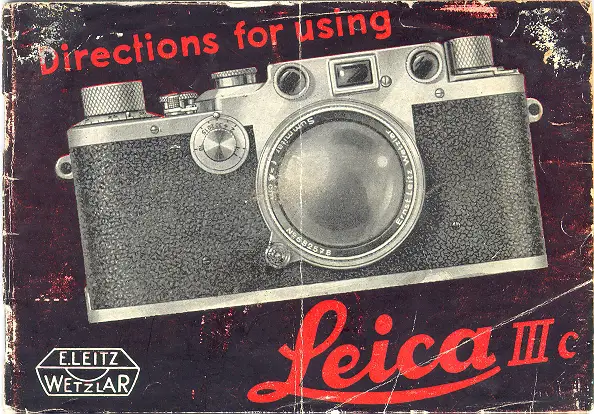
A few years ago, Sherry Krauter in New York cleaned and checked the Summitar lens for me. Mine is pristine and never suffered the scratches in the soft coating that plague so many 1940s lenses (old-time photographers cleaned their lenses with their neckties).
The shutter in the iiic had been troublesome for over a decade, but Don Goldberg (DAG) in Wisconsin did a fantastic job overhauling it mid-2017. He replaced the main roller with a new-old-stock genuine Leica part. For how many other consumer products that are almost seven decades old can you still get factory replacement parts (possibly some watches or Rolls Royce motorcars?)? The chrome on mine is pitted because in the early post-war era, chromium was hard to buy and many German cameras had poor plating.
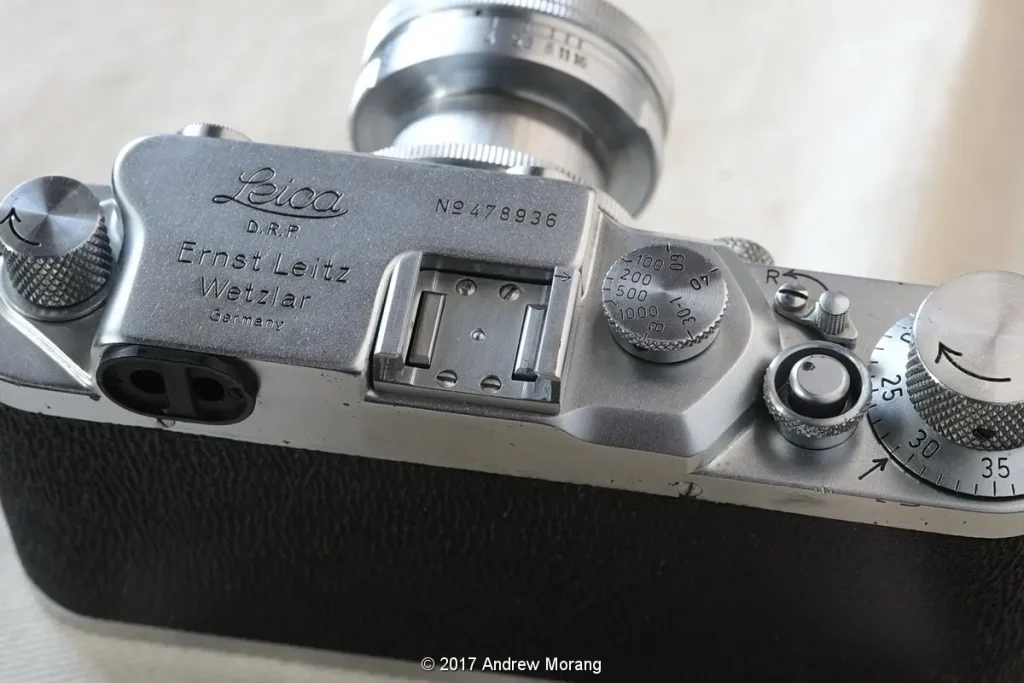
On modern standards, this camera is a bit fiddly to use. First, the viewfinder has two windows. The way I use it is to first look through the right finder, which shows the complete scene covered by the 50mm lens. If I like the scene, I shift my eye to the left window and focus on the object that is most important. By the way, it is a remarkably accurate focus arrangement considering the short base length. Then I shift back to the right window, do the final framing, and take the picture. Really, it is easier in practice than to describe in text.
Second, the film needs to be trimmed with scissors to have a long tongue before you insert it in the take-up spool and slide the 35mm cartridge and take-up spool into the body from the bottom. Leica once sold a trimming guide, but you do not need it. Just use your Swiss Army knife and trim about 8 or 10 cm from the tongue, and it will work. Once loaded, turn the rewind knob gently to remove slack. Then, when you advance the film, make sure the rewind knob is turning in the opposite direction to be sure the film is truly advancing. Again, it is easier to do than to describe.

My dad used this little Leica for many years, taking family photographs when we lived in Greece and southeast Asia in the 1950s and 1960s, and I used it in the 1970s and 1980s. For a trip to Nepal in October of 2017, I decided to use this little IIIC with black and white film and skip the obligatory digital camera entirely. It was a great success (and what a relief to not be fooling with hundreds of digital files).

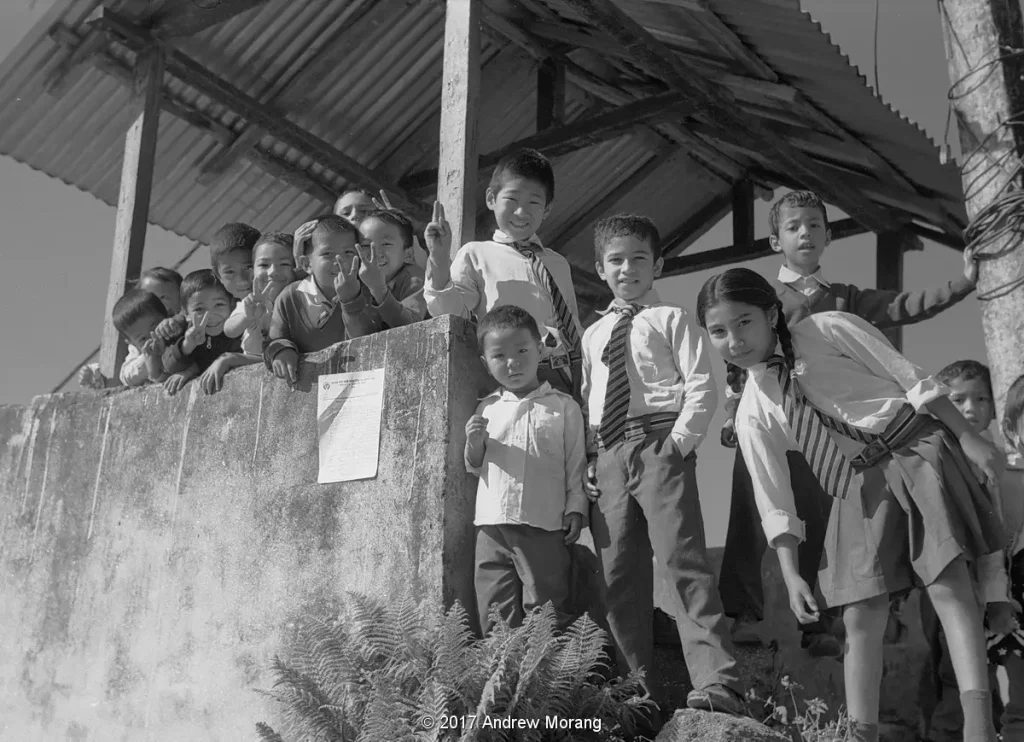
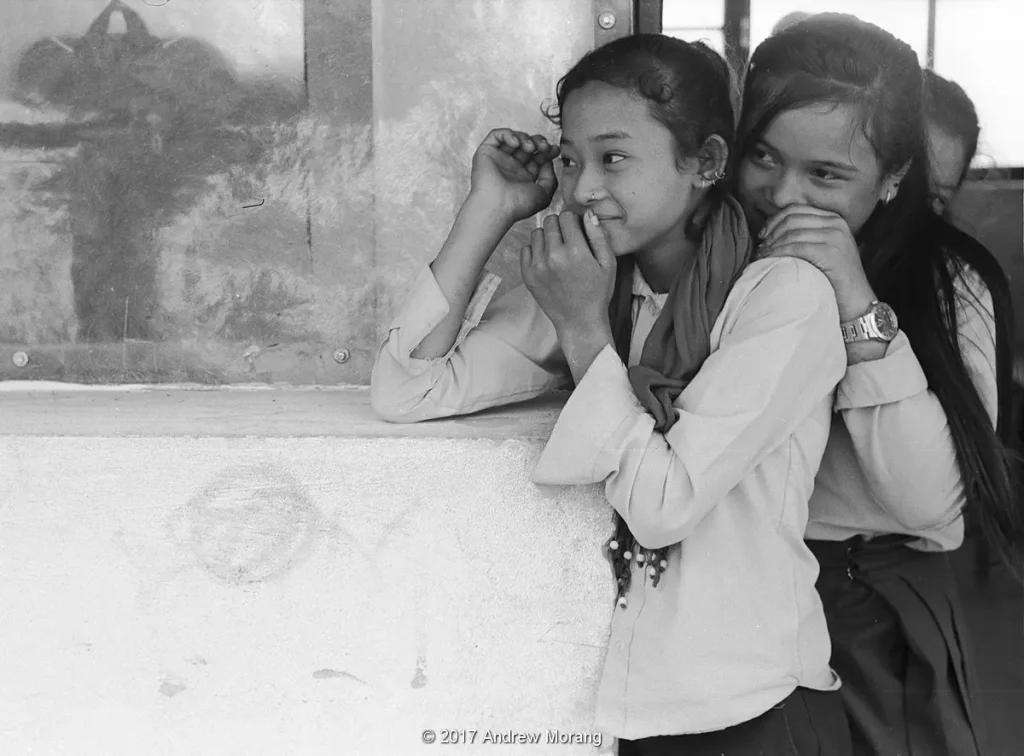
Many Nepalis were amazed that I could use a mechanical camera almost 70 years old. It was a tension-breaker to let people look through the viewfinder, but I had to explain that there was no LCD screen for them to see the results. These examples are on TMax 100 or TMax 400 film, developed by Praus Productions in Rochester, New York, using Xtol developer. For exposure, I used a Gossen Luna Pro Digital meter, usually in reflected mode but sometimes in incident mode.
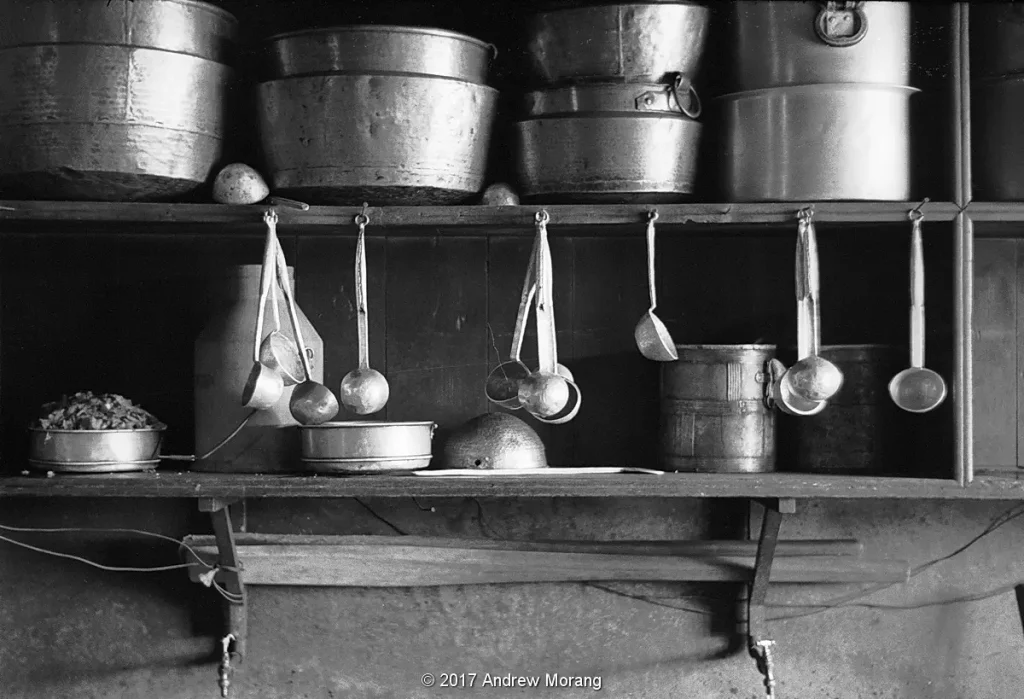
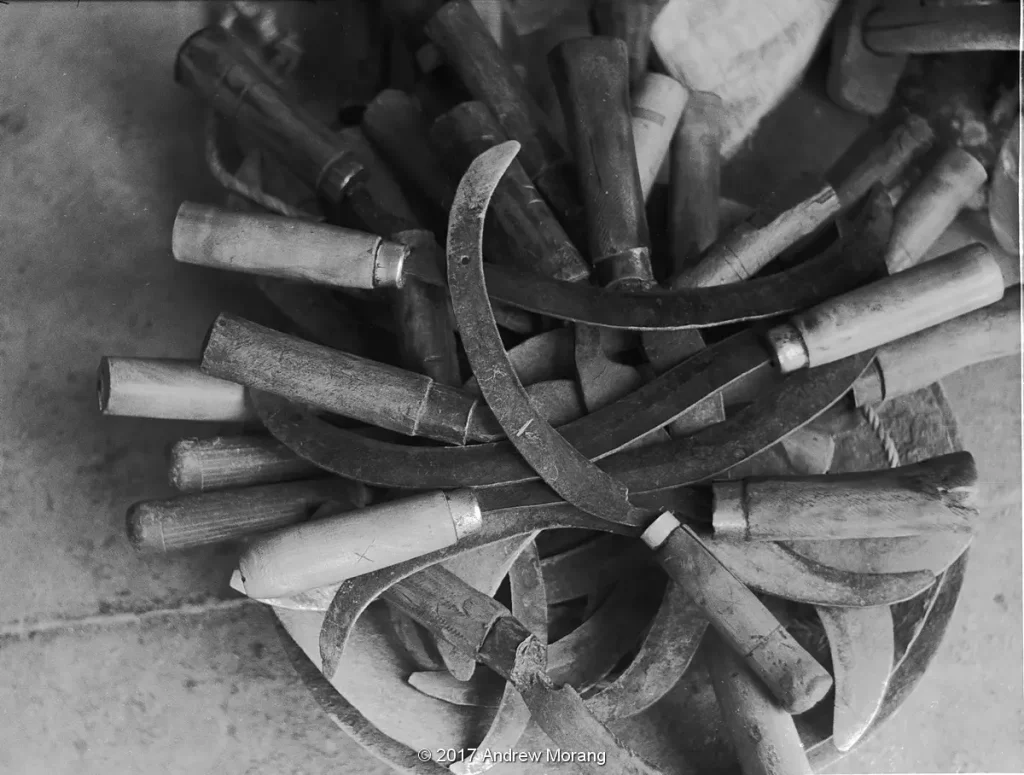
The kitchens and workrooms in monasteries were really interesting. I especially liked the way the Summitar lens made the shiny objects glow against the background. The Summitar lens is a bit quirky. My example (and maybe all of them?) has a field curvature, so the edges of a flat object will be fuzzy. But I barely notice it in landscapes. A typical scene with the subject near the center has smooth out of focus area around the edges, or the infamous “bokeh”. Twenty years ago, almost no one thought about it, but nowadays, digital photographers are obsessed with the topic. The newer Type 2 and Type 4 50mm f/2.0 Summicron lenses that I use on my Leica M2 body are “better”, but I rather like the old Summitar.
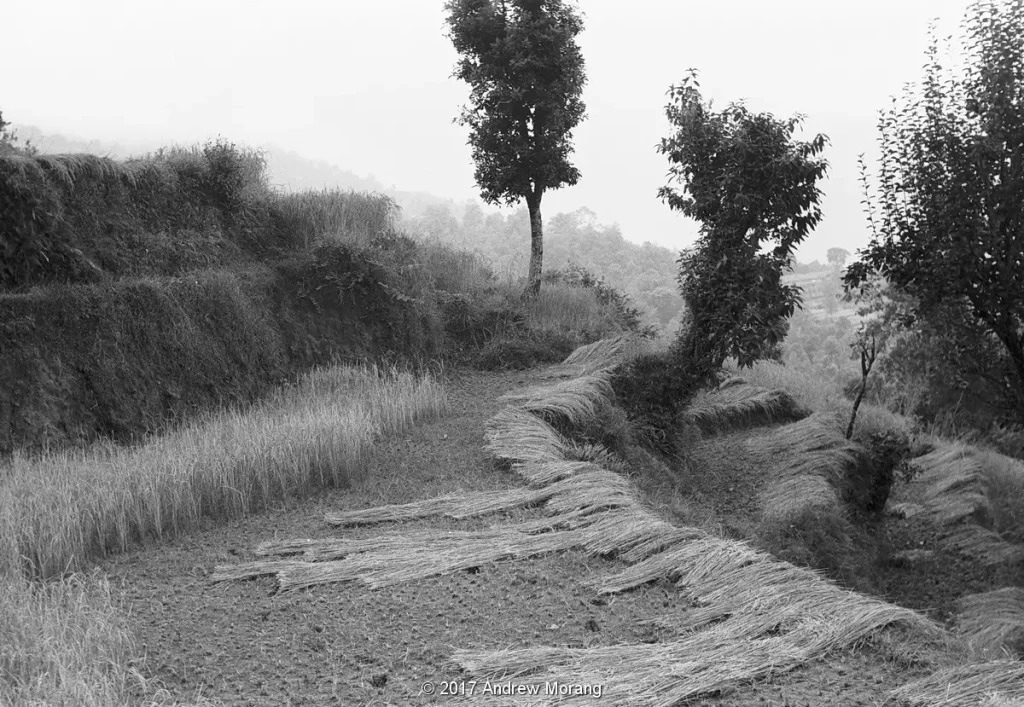
It feels good to have my dad’s camera in operation again. He would be pleased
Thank you, Hamish, for letting me contribute. For more film and Urban Decay: https://worldofdecay.blogspot.com
Share this post:
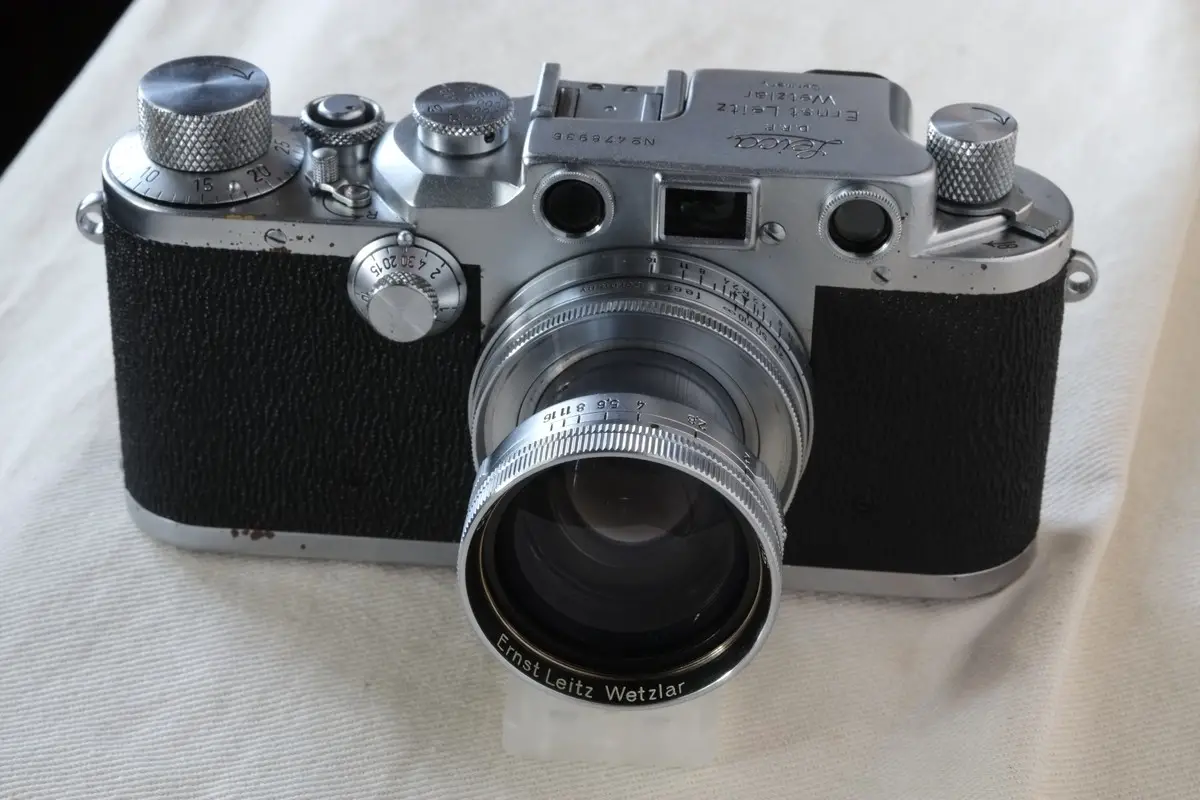








Comments
Terry B on Leica IIIC Review – A family member back in operation – by Andrew Morang
Comment posted: 10/02/2018
Stig Starr on Leica IIIC Review – A family member back in operation – by Andrew Morang
Comment posted: 10/02/2018
Ken Davis on Leica IIIC Review – A family member back in operation – by Andrew Morang
Comment posted: 10/02/2018
Comment posted: 10/02/2018
Jim Grey on Leica IIIC Review – A family member back in operation – by Andrew Morang
Comment posted: 10/02/2018
StephenJ on Leica IIIC Review – A family member back in operation – by Andrew Morang
Comment posted: 10/02/2018
Sergio on Leica IIIC Review – A family member back in operation – by Andrew Morang
Comment posted: 10/02/2018
Ciao
ScottP on Leica IIIC Review – A family member back in operation – by Andrew Morang
Comment posted: 11/02/2018
These are not "pictures" or "snaps." These are photographs, and they are very fine.
Thanks for sharing them.
jeremy north on Leica IIIC Review – A family member back in operation – by Andrew Morang
Comment posted: 11/02/2018
Richard Richter on Leica IIIC Review – A family member back in operation – by Andrew Morang
Comment posted: 11/02/2018
Dan Castelli on Leica IIIC Review – A family member back in operation – by Andrew Morang
Comment posted: 11/02/2018
Your Dad would be pleased and so proud of the work you've produced. Your images remind me of the work made by the early Magnum photographers after WW2 and the late 1950's. The world was simpler and more trusting back then, and you've managed to capture that quality. Very nicely done.
Dan. flickr.com/photos/dcastelli9574/
David McI on Leica IIIC Review – A family member back in operation – by Andrew Morang
Comment posted: 11/02/2018
Martin Bruntnell on Leica IIIC Review – A family member back in operation – by Andrew Morang
Comment posted: 08/03/2018
The Olympus Trip 35 taught me to be (a little bit) more spontaneous photographically - By Andrew Morang - 35mmc on Leica IIIC Review – A family member back in operation – by Andrew Morang
Comment posted: 05/05/2018
The Yashica Electro 35CC - a mini review by Andrew Morang - 35mmc on Leica IIIC Review – A family member back in operation – by Andrew Morang
Comment posted: 31/05/2018
janourda on Leica IIIC Review – A family member back in operation – by Andrew Morang
Comment posted: 15/11/2018
Flavio Colker on Leica IIIC Review – A family member back in operation – by Andrew Morang
Comment posted: 04/12/2018
Richard Moore on Leica IIIC Review – A family member back in operation – by Andrew Morang
Comment posted: 10/02/2019
Comment posted: 10/02/2019
Compact Excellence: A Review of the Voigtländer Vito BL by Andrew Morang - 35mmc on Leica IIIC Review – A family member back in operation – by Andrew Morang
Comment posted: 05/04/2019
frank on Leica IIIC Review – A family member back in operation – by Andrew Morang
Comment posted: 05/09/2019
In Praise of Kodak Tri-X; Five Decades and Counting - by Andrew Morang - 35mmc on Leica IIIC Review – A family member back in operation – by Andrew Morang
Comment posted: 06/05/2020
Dilemma Dilemma: What Shall I Use, Color or Black & White? A Short Comparison - by Andrew Morang - 35mmc on Leica IIIC Review – A family member back in operation – by Andrew Morang
Comment posted: 15/05/2020
Thomas on Leica IIIC Review – A family member back in operation – by Andrew Morang
Comment posted: 02/09/2023